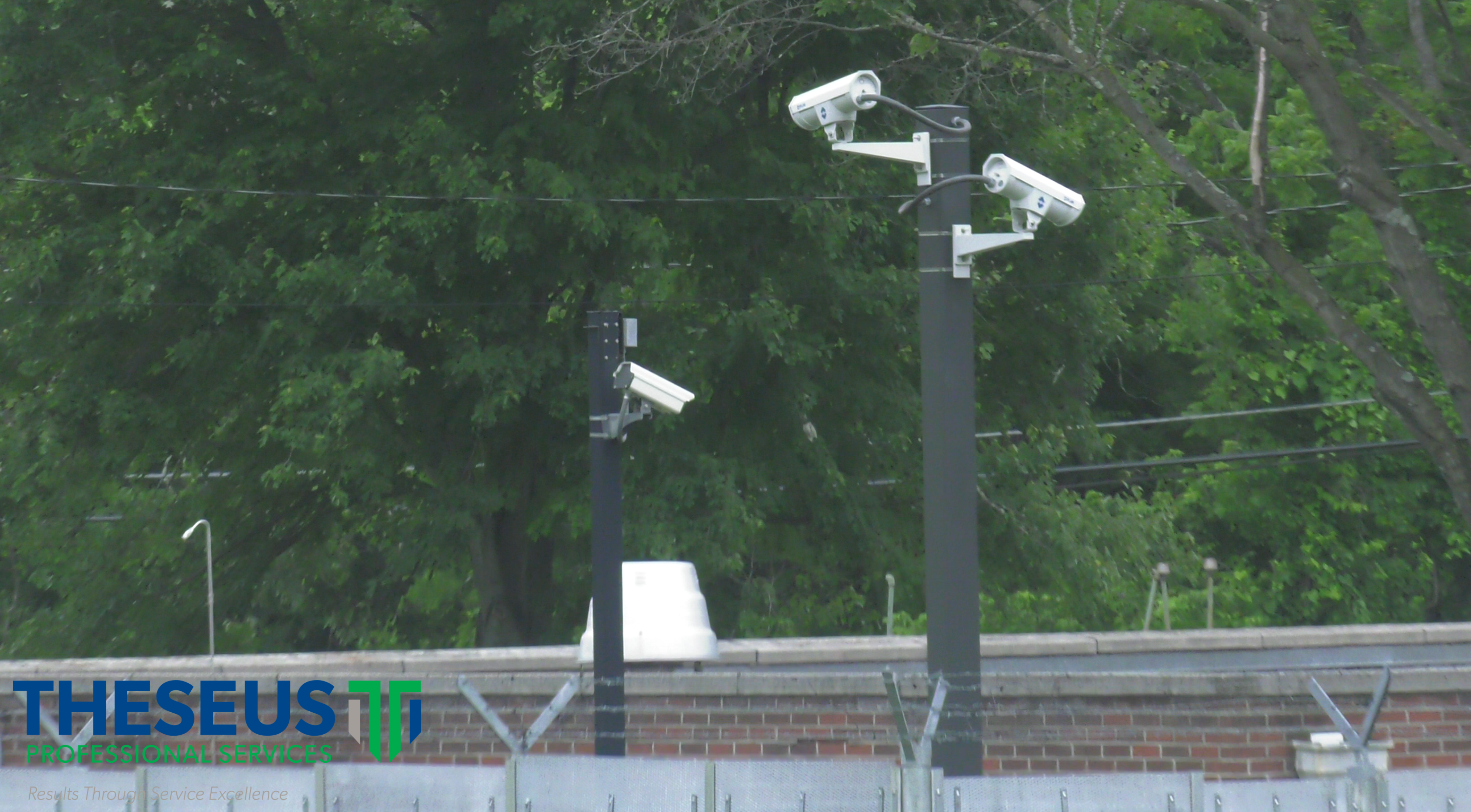3 min read
PART 1 - Choosing the Right Security Camera for Your Facility: A Practical Guide - Top 9 Considerations
![]() Theseus Team
:
Nov 14, 2024 8:17:09 AM
Theseus Team
:
Nov 14, 2024 8:17:09 AM

Selecting a security camera system for any facility, whether a corporate office, data center, or hospital, involves more than just picking a device off of a website or from a data sheet. Different facilities have unique requirements, and understanding these needs ensures comprehensive, reliable, and compliant monitoring. Here’s a detailed look at what to consider when choosing the right camera setup for any facility.
1. Lighting Conditions
Every facility has varied lighting that can impact camera performance. Areas with ample natural light during the day may still need visibility at night, especially in parking lots or storage rooms. Cameras with strong low-light capabilities or infrared (IR) technology ensure clear images regardless of lighting conditions.
2. Thermal Imaging
For facilities requiring high-security measures, thermal cameras add an extra layer of detection. These cameras read heat signatures, making them valuable in areas, like fence line perimeters, where visibility may be limited or environmental conditions challenging. Thermal imaging is beneficial for perimeter security, restricted access points, and outdoor areas prone to low light. While these cameras are a significant investment, they’re effective for facilities needing high-level surveillance.
3. Resolution & DORI Standards
Image quality plays a significant role in capturing details needed for security and incident review. Camera resolution should meet DORI standards for the desired surveillance outcome, which stand for Detection, Observation, Recognition, and Identification. These standards define the level of detail required for specific surveillance tasks. Higher resolution cameras capture clearer, more detailed images, ideal for areas like main entrances or high-traffic areas. However, balancing resolution with budget and storage capacity is essential, as higher-quality cameras often come at a higher cost.
4. Environment: Indoor vs. Outdoor
The demands of indoor versus outdoor surveillance differ greatly. Outdoor cameras must withstand weather conditions and potential tampering, so they need durable housing and protection ratings (IP66 or IP67 are common). Indoor cameras, on the other hand, don’t require as much weatherproofing and are typically installed more discreetly to maintain a clean look within the facility. Choosing cameras based on their environment ensures durability and performance.
5. Lens Type: Panoramic vs. Conventional
For large areas, such as open office spaces or expansive outdoor lots, and even stairwells, panoramic cameras with wide-angle or 360-degree lenses are ideal. They reduce the number of cameras needed by covering more area with a single unit. Conventional lenses, with a narrower field of view, are best for areas needing focused coverage, such as entryways, corridors, or high-security zones. Selecting the appropriate lens type for each space maximizes coverage efficiency and reduces the need for excess equipment. Again, be sure to consider DORI.
6. Camera Type: PTZ vs. Fixed
PTZ (pan-tilt-zoom) cameras offer flexibility for monitoring larger areas by allowing remote control to adjust the camera’s view. This is especially useful for facilities needing dynamic surveillance, like warehouses or large office lobbies, where one camera can cover multiple angles. Fixed cameras, by contrast, monitor one set area consistently, making them ideal for high-traffic zones or entry points where continuous monitoring is essential. Deciding between PTZ and fixed depends on whether the area requires a constant view or variable angles. Likewise, a PTZ camera paired with a panoramic camera can provide vast observation with the ability to "zoom in" with the PTZ camera based on automated alarm or manual operation.
7. Privacy Considerations
Maintaining privacy in certain areas, especially in mixed-use facilities, is crucial. Some cameras allow privacy masking, a feature that obscures or blurs parts of the view where capturing sensitive data isn’t necessary. Privacy masking can be especially helpful in settings like employee break rooms, customer service counters, or other areas where discretion is needed. Using this feature ensures facilities remain compliant with privacy regulations while keeping security intact. Today, AI can be used to upgrade from scene masking to face masking which can follow the subject without seeing a face throughout a scene without losing context of what is occurring.
8. Integration with Other Security Systems
Many facilities use a combination of security technologies. Integrating cameras with access control, alarms, and even environmental monitoring systems can create a responsive and cohesive security network. For instance, linking cameras to door access points allows security teams to monitor entries and exits more effectively. Adding cameras to alarm systems or emergency protocols, such as gunshot detection, can improve response times in incidents, creating a layered approach to facility security.
9. Budget Considerations
With budget constraints, selecting the right camera system requires balancing performance with cost. Facilities can strategically place high-resolution PTZ cameras in main entry points or sensitive areas while using fixed cameras in lower-priority zones. Factoring in ongoing costs, such as storage, maintenance, and software updates, is essential for staying within budget over time.
So what now?
Selecting security cameras for a facility involves careful planning and consideration, likely with the help of a security consultant. From lighting conditions and camera type to privacy and integration, each factor contributes to a system that provides thorough, reliable monitoring. Investing time to assess the facility’s unique needs enables a system design that enhances security, fits within budget, and aligns with the facility’s overall security goals. By taking these factors into account, facility managers can create a safer and more secure environment tailored to their unique operational needs. So, in Part 2 of this 2-part series, we will look at why partnering with a security consultant may be the right answer for you.
CONTINUE to PART 2 of this series >>
Contact us to discuss your security posture >>




